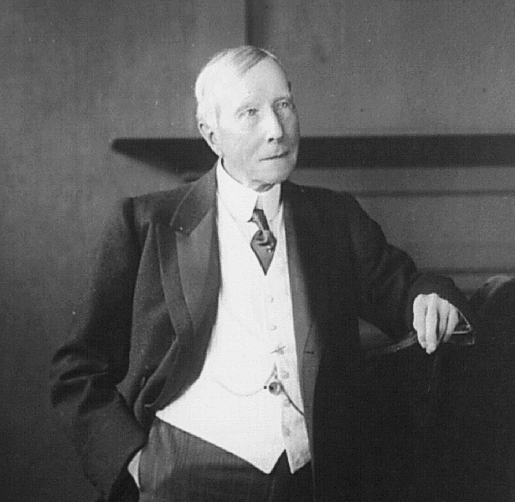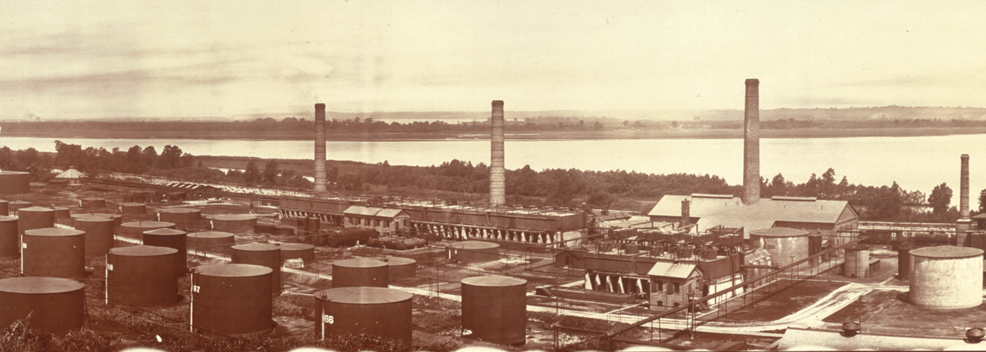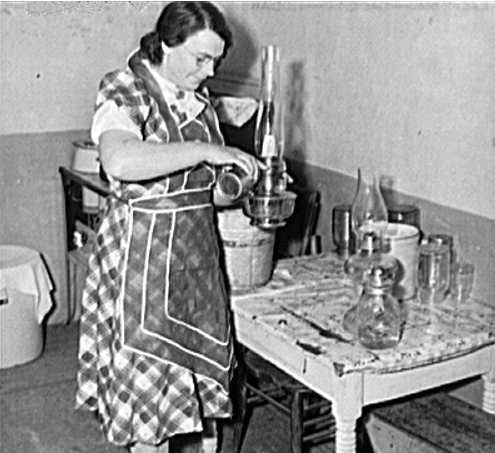John D.
Rockefeller
and the Standard Oil Company John D. Rockefeller is famous for starting the Standard Oil Company in 1870. He introduced new ideas that improved the quality of oil products and made them more widely available. The Standard Oil Company became one of the largest and most successful businesses in history. It made John D. Rockefeller one of the richest men in America. By the 1890s, Rockefeller and his partners controlled about 90 percent of the oil refining business in the entire country. |
 |
|
From farm
boy to business leader
John D. Rockefeller grew up in fairly poor circumstances on a farm in New York State in the years before the Civil War. He was a good student, however, and got his start in a business in Ohio that supplied products to grocery stores. Oil was "the new big thing" in the 1860s. Lots of people were drilling oil wells. Rockefeller and his business partners decided to go into the oil refining business instead. Refining means processing the crude oil pumped from the ground into useful products such as kerosene, gasoline, and lubricating oil. This stereoscope photo card from the 1860s shows an oil well and oil storage tanks in Pennsylvania. Most of the early oil wells were in that state. |

|
The
Standard
Oil Company grew rapidly
The photo below shows one of the many Standard Oil Company refineries used to convert crude oil into useful products like kerosene and gasoline. Rockefeller was a genius at business organization. He and his partners led the way in developing better refineries and selling high quality oil products all over the country. |

|
Kerosene for lamps Kerosene, not gasoline, was the most important product made from crude oil in those days. It was used in lamps in almost every home and business, because it burned with a bright white light. The old photograph on the right shows a farmer's wife filling several lamps in her home with kerosene. As electric lights came into use, the need for kerosene fell sharply. Fortunately for the Standard Oil Company, automobiles became more common at about that same time. Standard Oil's refineries began producing more of the gasoline that cars needed, and cut back on kerosene production. |
 |
Rockefeller's donations to good causes After retiring in 1897, Rockefeller began giving away much of his fortune. A wealthy person who gives large sums of money to good causes is often called a philanthropist. Rockefeller and his family donated a total of over $500 million dollars to support:
One example:
Rockefeller donated a million
dollars in 1910 to start a medical program to eliminate hookworm
disease. It was a serious health problem in those days,
especially among young children living in the Southern
states.
The tiny hookworm parasites suck blood from the intestines of those affected, making them tired and weak. The program Rockefeller helped start greatly reduced the hookworm problem in the early 1900s. |
You can learn more about the Rockefeller program to eliminate hookworm disease at this web site: The Rockefeller Foundation |
|
Criticism
of Rockefeller:
The monopoly issue The Standard Oil Company grew so large in the 1880s and 1890s that it became a monopoly. A monopoly is when one company gains control over all or nearly all of the supply of a product. When a company has a monopoly, there is little or no competition from other businesses. Critics said the Standard Oil Company used illegal tricks to make it difficult for competing oil refineries to stay in business. Critics also said that as a monopoly, the Standard Oil Company kept the prices of oil products higher than they would be if competition existed among many oil refineries. |
A
monopoly
is when one company gains control over all or nearly all of the supply of a product. |
.
|
The Standard Oil Company was broken up in 1911 In 1890 a law was passed by Congress that made most monopolies illegal. The law is called an anti-trust law, because in those days large monopolies were also called trusts. In 1911 the Standard Oil Company was ordered by a federal court to break itself up into many separate, smaller companies. That way, the oil industry would no longer be dominated by one huge company. These are just a few of the big oil company names today that trace back to the breakup of the old Standard Oil Company: ExxonMobile
Chevron Amoco Sohio
Although the Standard Oil Company itself no longer exists, the Rockefeller family and its large fortune are still part of American life today. The grandchildren and great-grandchildren carry that famous name today in fields including politics, business, banking, medicine, and charity work. |
 John
D. Rockefeller (on the left)
and his son in 1915. |
All photos are from the Library of Congress.
Some images have been edited or resized for this page.
|
Copyright Notice
Copyright 2009, 2016 by David Burns. All rights reserved. As a guide to the Virginia Standards of Learning, some pages necessarily include phrases or sentences from that document, which is available online from the Virginia Department of Education. The author's copyright extends to the original text and graphics, unique design and layout, and related material. |